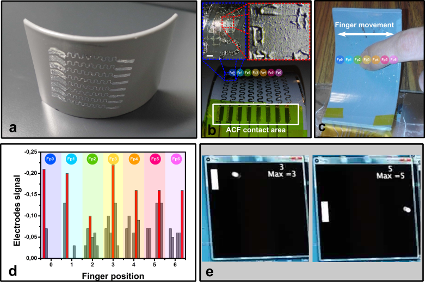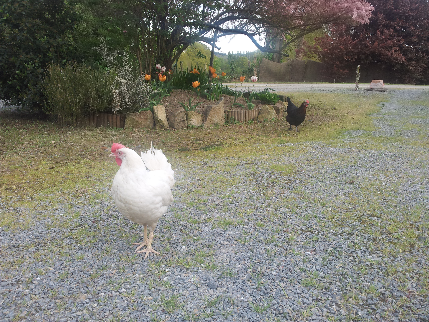Research projects
Porous Silicon for clean and sustainable energy production
-
Participation to Horizon Europe Networking Event - Cluster 5.2.
Presentation starts at 01:03:52
Horizon Europe Matchmaking from ERRIN on Vimeo.
Destination 5.2 Monday 31 May
MSCA Individual Fellowship Call
Next Generation Paper (NGP)
-
Next Generation Paper (NGP) is a project that offers huge potential to the travel industry, as brands will be able to create disposable interactive print magazines with incredible multi-sensory functionality that will truly ‘bring to life’ holiday experiences by playing local sounds and generating scents, with 360° images that can be navigated through. The paper could also trigger a breakthrough in ROI measurement of traditional.
See also :
Press releases
Blog communication
Exhibition to the COMM Museum (The Hague)
Interview
Project instigator : Pr. David Frohlich
Project manager for electronics : Dr. Radu Sporea
Water Transfer Printing (WTP)
-
The Water Transfer Printing (WTP) is an innovative way to fabricate and transfer electronics on daily-life 3D objects. We developped this method, in order to enable people to print and transfer their own devices, in a near future. Some examples of the obtained interconnects and devices are given here.
It has lead to the fabrication of an Arduino-based capacitive touchpad, used, for instance, to play a pong game.


Project leader : Dr. Maxime Harnois
Project associates : Dr. Emmanuel Jacques and Dr. Samuel Crand
Silicon nano-objects based sensors
-
The aim of this research work was to implement a lead ions sensor based on polycrystalline silicon nanostructures.
This material has been intensively studied by electrical and physical characterization. This study showed that structures such as polysilicon nanoribbons or nanowires have poor crystalline quality but satisfying enough electrical properties to be used as a sensor sensible elements. Nanoribbons have been functionnalized
by spontaneous grafting of diazonium salts that enable lead ions trapping at the surface of these nanoribbons. Thanks to the functionalization, sensor reached a limit detection as low as 2×10−7 mol.L −1 .
These results prove that sensing lead ions is possible thanks to low-cost polysilicon nanostructures. Development of a gate-all-around transistor based on polycrystalline silicon nanowires was detailed in my PhD thesis.
It could lead to increase sensibility of that type of microsensors.



PhD supervisor : Dr. Anne-Claire Salaün
Project associate : Prof. Laurent Pichon
Chemistry : Dr. Florence Geneste
My student's projects
Towards green electronics
-
Printing of an RC filter using a cheap desktop printer to jet a carbon black based ink (conductor) and screen-printing of egg white (insulator).
The aim was to fabricate a simple passive device using only sustainable and renewable materials. Additionally, we added the constraint to use "new" fabrication technique and cheap enough to encourage DIYers to develop electronics.
Note: This work has been done under the SATRO scheme that proposes summer placements for high school students in Surrey/London based universities. Bo-Yan Chung, on of our students, won the SATRO STEMX Annual Award.

Bo-Yan Chung's report
Project supervisor : Brice Le Borgne
Project co-supervisor : Radu Sporea
Students : Bo-Yan Chung and Inkyu Kwon
UV detection bracelet
-
Ultraviolet radiations are responsible for suntan but also for freckling and sunburns. These effects can lead to skin diseases and cancers. Two of my students had the idea to build an UV detector bracelet, connected to a smartphone, that could alert user in case of overexposure to sun. As function of the user-defined profile in terms of phototype (from pale white skin to black skin), some advices can be delivered to the consumer. The Arduino-based smart bracelet is coupled with commercial UV detector. It could also be used by dermatologist to monitor UV exposure of their patients. This project is still in progress and is supported by University's foundation (Fondation Rennes 1). Students also work with hospital CHU Pontchaillou dermatologists team.
Project supervisor : Brice Le Borgne
Students : Mehdi Khejjou and Aboubacar Iro
The bicycle radar
-
The safety of cyclists is an important problem to the extent of modes of transport are changing. The project consisted in using an ultrasonic radar to measure distance between the bicycle and an approaching car. The sensor is placed under the saddle and and communicates with a housing placed on the handlebar. Cyclist is then informed if a danger is coming. Communication was ensured by a bluetooth shield and protocols and the signals conditioning was performed by an Arduino microcontroller.
Project supervisor : Brice Le Borgne
Students : Hamid Stoutah, Maxime Fatrez and Salah-Eddine M'Hal
Embedded electronics for in-situ ammonia sensing
-
The aim of this project was to create an autonomous system for
Project supervisor : Dr. Emmanuel Jacques
Associate supervisor : Brice Le Borgne
Students : Carolina Pena Morales and Hamady Koundoul
Personnal projects
Analog henhouse
-
Breeding chickens is fun and enables to have fresh eggs every day. The problem is that, when you leave for few days, the neighbours are not always there to close the door of the henhouse. No problem, I build a system to automatically close the door when the sun sets. As the henhouse is far from my house, I needed a low consumption system so the use of microcontroller was prohibited. The system is consequently fully analog and based on a photoresistor. When the light is weak enough, a stepper motor gets strarted and closes the door. In the morning, the motor changes direction to open it.
Betting website on motor racing
-
As a Formula 1 fan, I developed a website to bet on races results with my family. No gambling, only fun. The aim is to predict the top 10 of each race. We earn points and at the end of the championship, we have a new "World Champion". The website is developed using HTML5, PHP3 and uses MariaDB/phpMyAdmin databases to automate points calculus.




